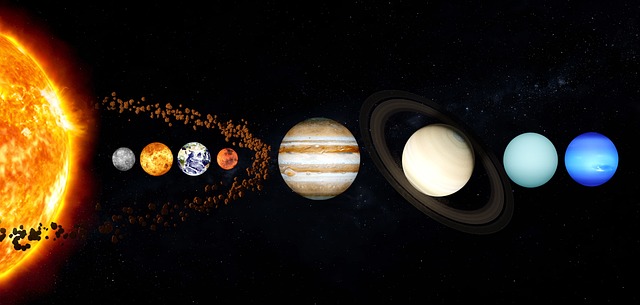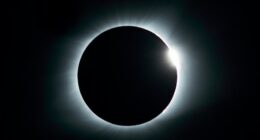The geocentric model puts the Earth at the center of the universe, with all celestial bodies orbiting around it. The heliocentric model puts the sun at the center of the solar system, with all planets, including Earth, orbiting around it.
The heliocentric model
The heliocentric model is the scientific theory that the Earth and other planets in our solar system orbit around the sun. This theory was first proposed by Nicolaus Copernicus in the 16th century, and further developed by Johannes Kepler and Galileo Galilei. The heliocentric model is now accepted as the correct explanation for the motions of the planets.
The geocentric model
In the geocentric model, the Earth is at the center of the universe and everything revolves around it. This was the prevailing view for thousands of years until Copernicus proposed a heliocentric model in which the Sun is at the center of the solar system and everything revolves around it.
The difference between heliocentric and geocentric models
Heliocentric and geocentric are two different models used to explain the motion of celestial bodies, particularly the sun, moon, and planets.
Geocentric refers to the belief that the Earth is the center of the universe, and all celestial bodies, including the sun and the planets, revolve around it. This was the dominant theory of the universe during ancient times, and was famously supported by the Greek philosopher Ptolemy in the 2nd century AD.
Heliocentric, on the other hand, refers to the belief that the sun is the center of the solar system, and all planets, including Earth, revolve around it. This model was first proposed by the Polish astronomer Nicolaus Copernicus in the 16th century, and was later supported by the observations and experiments of scientists such as Galileo Galilei and Johannes Kepler.
The key difference between the two models is the position of the center of the universe – geocentric places the Earth at the center, while heliocentric places the sun at the center. Heliocentric model is considered the correct one, as it is supported by a large body of scientific evidence and has been accepted as the standard model of the solar system since the 17th century.
How is the heliocentric model used?
The heliocentric model is used as a way to describe the motions and relationships of celestial bodies in the solar system. By placing the sun at the center, it allows for a simpler and more accurate explanation of planetary motion, including retrograde motion and the relative positions of planets in the night sky. The heliocentric model is also used as a basis for modern astronomical calculations and observations, including space missions and telescopic observations of the solar system.
How is the geocentric model used?
The geocentric model is not used in modern science to describe the motions and relationships of celestial bodies. It was the dominant theory during ancient times and was used to explain the motion of the planets and the sun in the sky. However, the geocentric model was eventually replaced by the heliocentric model, which was more accurate and could account for observed phenomena that the geocentric model could not explain. Today, the geocentric model is mainly of historical interest and serves as a reminder of the evolution of scientific thought over time.
Which is correct geocentric or heliocentric?
(Image by Daniel Roberts from Pixabay )

The heliocentric model is the correct one. It is supported by a vast amount of scientific evidence and has been accepted as the standard model of the solar system since the 17th century. The heliocentric model places the sun at the center of the solar system, with all planets, including Earth, orbiting around it. The geocentric model, which places the Earth at the center of the universe, was the dominant theory during ancient times but was eventually replaced by the heliocentric model due to its inaccuracies and inability to explain observed phenomena.
Why did heliocentric model replace geocentric model?
It is generally believed that Nicolaus Copernicus developed the heliocentric model, in which the planets revolve around the Sun, in the 16th century. However, there is evidence that the Greek astronomer Aristarchus of Samos proposed a similar model almost two thousand years earlier.
The heliocentric model replaced the geocentric model for a number of reasons.
First, it was a more accurate representation of planetary motion. The planets do not move in perfect circles, as the geocentric model requires, but rather in ellipses with the Sun at one focus.
Second, the heliocentric model better explained the observed changes in planetary apparent brightness (the planet’s “phase”), as well as retrograde motion.
Third, and perhaps most importantly, the heliocentric model did away with the need for epicycles. In the geocentric model, each planet’s orbit was thought to be composed of a small circle (the epicycle) that rotated around a larger circle (the deferent). This led to overly complex calculations and did not match observations well. The heliocentric model dispenses with epicycles altogether and instead has each planet move along its own orbit around the Sun.
Who created the geocentric theory?
The geocentric theory was first proposed by the Greek philosopher Aristotle in the fourth century BC. He believed that the Earth was the center of the universe and that all other heavenly bodies revolved around it. This theory remained widely accepted for over two thousand years.
Why was heliocentric theory rejected?
(Photo by David Menidrey on Unsplash )

In the early 1600s, most people in Europe believed in the geocentric model of the solar system, which placed Earth at the center of the universe. The Polish astronomer Nicolaus Copernicus proposed a heliocentric model, with the Sun at the center of the solar system, in 1543. However, his theory was not widely accepted because it clashed with the beliefs of the Catholic Church.
In 1609, the Italian astronomer Galileo Galilei built a telescope and made observations that supported Copernicus’s theory. He published his findings in a book called Dialogues Concerning Two New Sciences. The Church denounced Galileo’s work and put him on trial for heresy. He was found guilty and spent the rest of his life under house arrest.
Despite Galileo’s observations, heliocentric theory was not widely accepted until after Isaac Newton published his laws of motion and gravity in 1687. Newton’s laws explained why the planets orbit around the Sun as they do. Once Newton’s laws were established, there was no longer any scientific evidence to support geocentric theory, and heliocentric theory became widely accepted.
Featured Image By – Julie Nash from Pixabay








